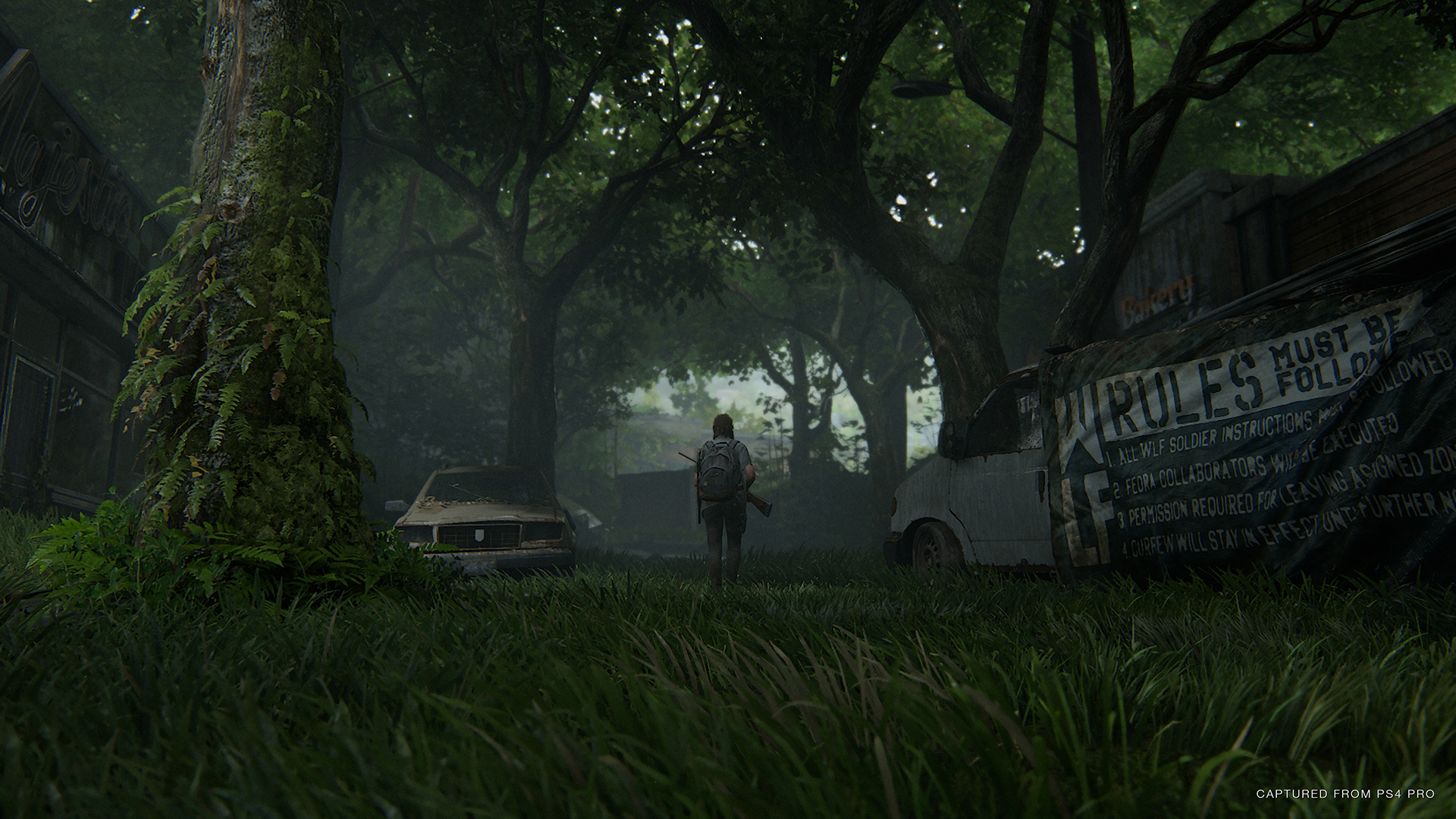
EGM’s Best of 2020: #1 The Last of Us Part II
At the time I write this, The Last of Us Part II holds a Metacritic user rating of just 5.7. Its critical score, by comparison, is in the low 90s.
The disparity itself is less telling than the reasons behind it. Some of the major criticisms—like complaints about the crunch culture at developer Naughty Dog—are valid and worth discussing. Others, like debates about its “wokeness,” aren’t. But the most common complaint is the simplest one: People hate this game because they hate what it does to, and with, its characters.
If nothing else, that should serve as a reminder of how exceptional it is when a game of this profile creates characters and stories that players care so deeply about on anything more than a symbolic level. Most event games star glorified mascots. They’re pushed into existence by gameplay design, by systems and engagement and monetization in all its forms. The Last of Us Part II, both in official accounts and by all outward appearances, sprung out of a desire to continue the narrative of the first game in a way that felt true to its world and the people within it.
For a game to be driven by its story—and for that story to be driven by its characters rather than by action setpieces—is still so uncommon in this industry as to be noteworthy. I’m not suggesting Sony and Naughty Dog didn’t want to sell millions of copies of The Last of Us Part II. I’m suggesting they took ambitious risks to get there, and dismissing the game as self-serious awards bait doesn’t really diminish the fact that the risks were genuine.
There’s no question the gameplay represents an astonishing refinement of the stealth action of the first game, and that Naughty Dog has once again used its mastery of PlayStation technology to push the atmosphere of its worlds and the humanity of its characters to new heights. On those fronts, you’d be hard pressed to argue the game is anything other than a total success.
The numbers alone tell us the narrative is a different story. But The Last of Us Part II isn’t great in spite of divisiveness, but—at least in part—because of it. By their nature, games want to be liked, to be fun. Even if the appeal lies in overcoming a daunting challenge, the goal is to make your eventual success even sweeter. The second chapter of Joel and Ellie’s story offers no real equivalent; its triumphs are all bittersweet. Despite crafting a world full of monsters, both fungal and human, Naughty Dog deals most meaningfully not in horror or terror but in dread.
As I wrote in my review, the game may not be alone in that regard. But it remains shockingly rare, and the more I’ve reflected the more I’ve realized that The Last of Us Part II does have a meaningfully different outlook than its similars. I brought up Far Cry 2, BioShock, and Spec Ops: The Line, and while those three all tackle the nature of interactive violence, they end in either triumph or a sense of detached irony. The characters may not win, but the players do; from our privileged perspective, we know better. The Last of Us Part II is not so smug, so pat, so comfortable with itself.
Listen, I guess I’ve officially become a hack, because I’m about to compare a video game to Citizen Kane, but—I hope—not in the way you think. See, this week I read Pauline Kael’s mammoth 1971 New Yorker two-parter on the film, so it’s been top of mind as I grapple with writing once more about The Last of Us Part II.
The superficial parallels jumped out at me almost immediately. Immediate critical acclaim, followed by a failure to win over audiences. Sometimes facile moralism and pop psychology that threaten to overshadow its stunning technical accomplishments and undermine the real emotional heft of its best moments. Heck, R.K.O. even delayed Kane’s release a few months due to uncomfortable similarities to the real world. (Needless to say, however, that the threat of reprisal from Kane’s inspiration, William Randolph Hearst, was entirely predictable in a way a global pandemic was not.)
But the real thing that stood out to me is this line of Kael’s: “Because of the collaborative nature of most movies, masterpieces are rare, and even masterpieces may, like ‘Kane,’ be full of flaws, but the interaction frequently results in special pleasures and surprises.” I’m not sure I’d suggest The Last of Us Part II is a masterpiece. But it is a great triumph of messy collaboration, and of artistic independence in a system that seldom allows it.
It’s easy to speak of the game in negatives: as too bleak, as too controversial, as unnecessary, as a lesser sequel. But six months on, what’s stuck with me most are the special pleasures and surprises. A guitar. A rope. A baby. A burrito. And yes, even a back half and climax that are liable to infuriate with their antagonistic approach to player agency.
You don’t have to like The Last of Us Part II. You may well hate it, and that doesn’t make you wrong. But in a year so defined by division and alienation, by the struggle to find glimmers of hope in darkness, Naughty Dog delivered the only major game that dared to try to speak to all of that—the good and the bad.
